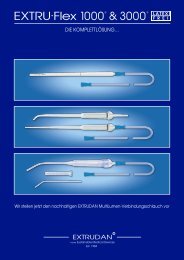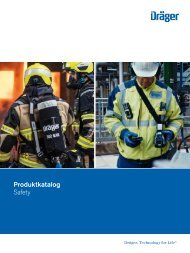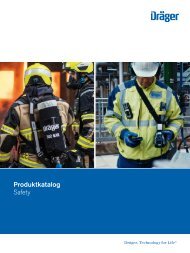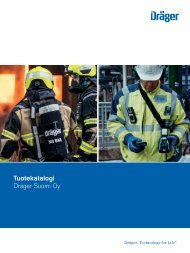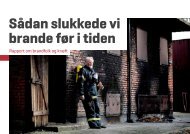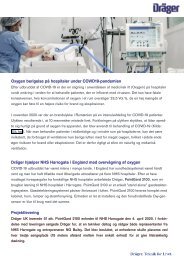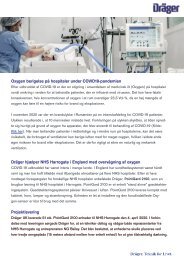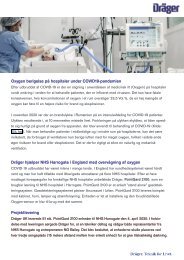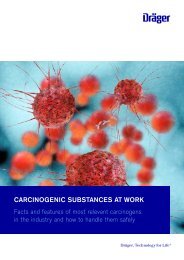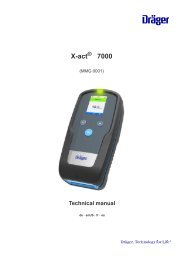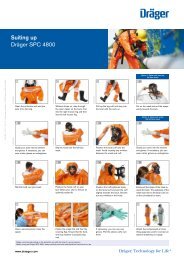Neonatal-Non-Invasive-Ventilation-NIV
Neonatal intensive care continues to be one of the most challenging fields in medicine. Fortunately years of experience from careful clinical observation, meticulous research and plenty of tender loving care have helped to significantly increase the chances of survival for our tiny patients. This booklet is an attempt to address the current development process of noninvasive ventilation therapies, both from a theoretical and a practical standpoint.
Neonatal intensive care continues to be one of the most challenging fields in medicine. Fortunately years of experience from careful clinical observation, meticulous research and plenty of tender loving care have helped to significantly increase the chances of survival for our tiny patients. This booklet is an attempt to address the current development process of noninvasive ventilation therapies, both from a theoretical and a practical standpoint.
Create successful ePaper yourself
Turn your PDF publications into a flip-book with our unique Google optimized e-Paper software.
12 I 2. NON-INVASIVE RESPIRATORY SUPPORT FOR NEONATES<br />
statistically lower minute volumes 48 . Pillow and colleagues found in sophisticated<br />
animal experiments that bubble-CPAP, as opposed to constant flow CPAP, reduced<br />
the work of breathing, improved gas exchange and increased lung volume 63 . Several<br />
authors, including Courtney et al., have reported a positive effect of Bubble-CPAP<br />
on oxygenation, which appears to be superior to that achieved using variable-flow.<br />
However, the statistically significant, positive effect on the work of breathing of using<br />
Bubble-CPAP as found in-vitro and tightly controlled animal experiments has yet to<br />
be replicated in clinical studies.<br />
ADVANTAGES<br />
DISADVANTAGES<br />
Increases functional residual capacity<br />
Improves pulmonary compliance and reduces the<br />
work of breathing<br />
Splints airway and diaphragm<br />
Prevents alveolar collapse<br />
Reduces the alveolar-arterial oxygen pressure<br />
gradient<br />
Reduces intrapulmonary shunting<br />
Reduces obstructive and mixed apnea<br />
Conserves surfactant<br />
Increases risk of air leakage syndromes<br />
High CPAP can lead to lung over-inflation,<br />
decreased compliance, and increased work of<br />
breathing<br />
Increased intra-thoracic pressure may reduce<br />
venous return to the right heart and reduce cardiac<br />
output<br />
Lung over-inflation decreases tidal volume and may<br />
increase PCO 2<br />
and the dead-space fraction<br />
Air may escape into the stomach, causing gaseous<br />
distension (CPAP belly syndrome)<br />
After about 10 days of nCPAP, more than 10% of<br />
infants develop nasal complications (columellar<br />
necrosis, ulceration of the nasal cavity, or vestibular<br />
stenosis)<br />
Skin excoriation and nasal damage may give rise<br />
to bacterial infection, in particular by coagulasenegative<br />
staphylococci<br />
Table 1: Advantages and disadvantages of CPAP therapy (modified from Mahmoud 2011) 50<br />
2.4.1.4. Early use of nasal CPAP – CPAP from birth<br />
Using video documentation in the delivery room, O’Donnell et al. showed that approx.<br />
80% of ELGANs do indeed show signs of breathing at birth 60 . Routine intubation<br />
of such infants will interfere with their physiological fetal-neonatal transition.<br />
Several large-scale clinical trials have compared the use of invasive to non-invasive<br />
respiratory support of breathing VLBWI and ELGANs from birth. Meta-analyses of<br />
these studies have shown significant positive impact on survival and overall pulmonary<br />
outcomes with no added negative effects in the non-pulmonary outcomes in the<br />
non-invasively managed patients 27,77 . The number needed to treat to save a VLBWI<br />
from death or BPD was between 25 and 35, respectively (Fig. 1). Follow-up stud-




